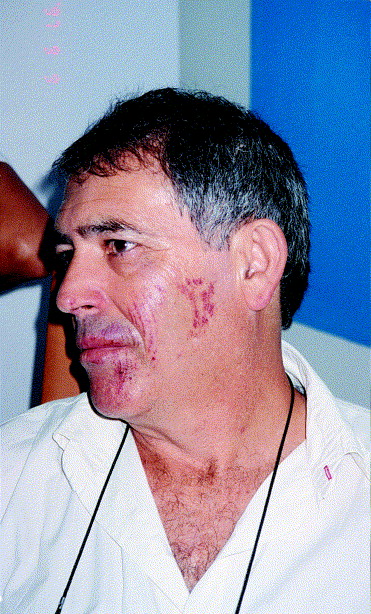How to Treat Airbag Burns

Airbags are installed in vehicles to act as buffers in case of an accident. They stop the driver and passenger from hitting the steering wheel or the dashboard during a collision. However, when deployed, the bags hit your body, causing friction and burns. These burns vary in size and intensity and usually fade away with time without medical attention.
There is no reason to panic or worry if you find some bruises or blisters on your skin after a collision. However, if the burns are large and painful, you should visit your doctor for a checkup.
Airbag deployment during a vehicle accident can cause three types of burns, thermal, chemical and friction. Each type of burn needs a different treatment, so it is necessary to first identify which kind if burn you have and then get it treated.
Instructions
-
1
Chemical burns and treatment
Start with basic first aid - remove any tainted clothing and wash the affected area thoroughly with an excess of water to remove the chemical substance. If the chemical burn has also affected the sensitive parts of your body like eyes, the best way to remove it is to get into shower and wash the injured area properly. Make sure you wash the affected area for at least 20 minutes. Now if the burn looks bad, get some medical treatment. For severe burns, IV fluids are given to the patient to normalize his or her heart rate and blood pressure. IVs to reduce pain and protect against infection are also recommended. Apart from medication, you should apply ointments and bandage the burns if possible. -
2
Thermal burns and treatment
Thermal burns are commonly a result of heat from a chemical reaction. To prevent severe burning use cold water to treat the affected areas. Treating the burn with cold water within 30 seconds of the accident may limit its severity. To control the pain, use a cool and wet compress. You can also take some medicine like aspirin or acetaminophen for pain relief. To avoid infection on the affected area, use some antibiotic ointment specially made for burns. -
3
Friction burns and treatment
On deployment, air bags rub against the skin, causing friction burns. These burns usually cause blisters that do not need special medical care and heal without any assistance. However, you should not scratch the blisters because they keep the skin clean and promote healing, while preventing the wound from infection. If you want to burst the blisters, use a sterile pin. Even after popping the blister, do not remove the skin, since it protects the wound underneath until new skin is formed.







